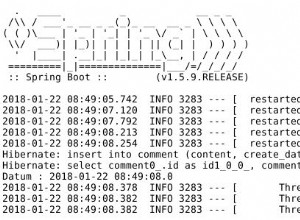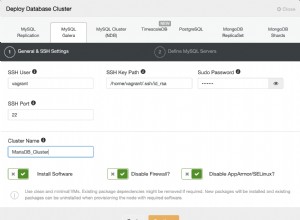Selon steven-rumbalski le commentaire ci-dessus :
Remplacer : with SSHTunnelForwarder(...) as server
Avec : server = SSHTunnelForwarder(...)
Ensuite, enveloppez : server.start() ... server.stop()
autour du code que vous souhaitez recevoir via le tunnel SSH.
Voici le code converti :
import pymysql, shlex, shutil, subprocess
import logging
import sshtunnel
from sshtunnel import SSHTunnelForwarder
import iot_config as cfg
def OpenSSHTunnel():
global server
sshtunnel.DEFAULT_LOGLEVEL = logging.DEBUG
server = SSHTunnelForwarder(
(cfg.sshconn['host'], cfg.sshconn['port']),
ssh_username = cfg.sshconn['user'],
ssh_private_key = cfg.sshconn['private_key_loc'],
ssh_private_key_password = cfg.sshconn['private_key_passwd'],
remote_bind_address = ('127.0.0.1', 3306)
)
def OpenRemoteDB():
global remotecur, remotedb
remotedb = None
remotedb = pymysql.connect(
host='127.0.0.1',
user=cfg.remotedbconn['user'],
passwd=cfg.remotedbconn['passwd'],
db=cfg.remotedbconn['db'],
port=server.local_bind_port
)
remotecur = remotedb.cursor()
print("Checkpoint 1")
def SyncActions():
print("Checkpoint 2")
# this should now work as expected
remotecur.execute("SELECT ActionID, Description FROM cmAction")
for r in remotecur:
print(r)
# Main program starts here
OpenSSHTunnel()
server.start()
OpenRemoteDB()
SyncActions()
server.stop()




